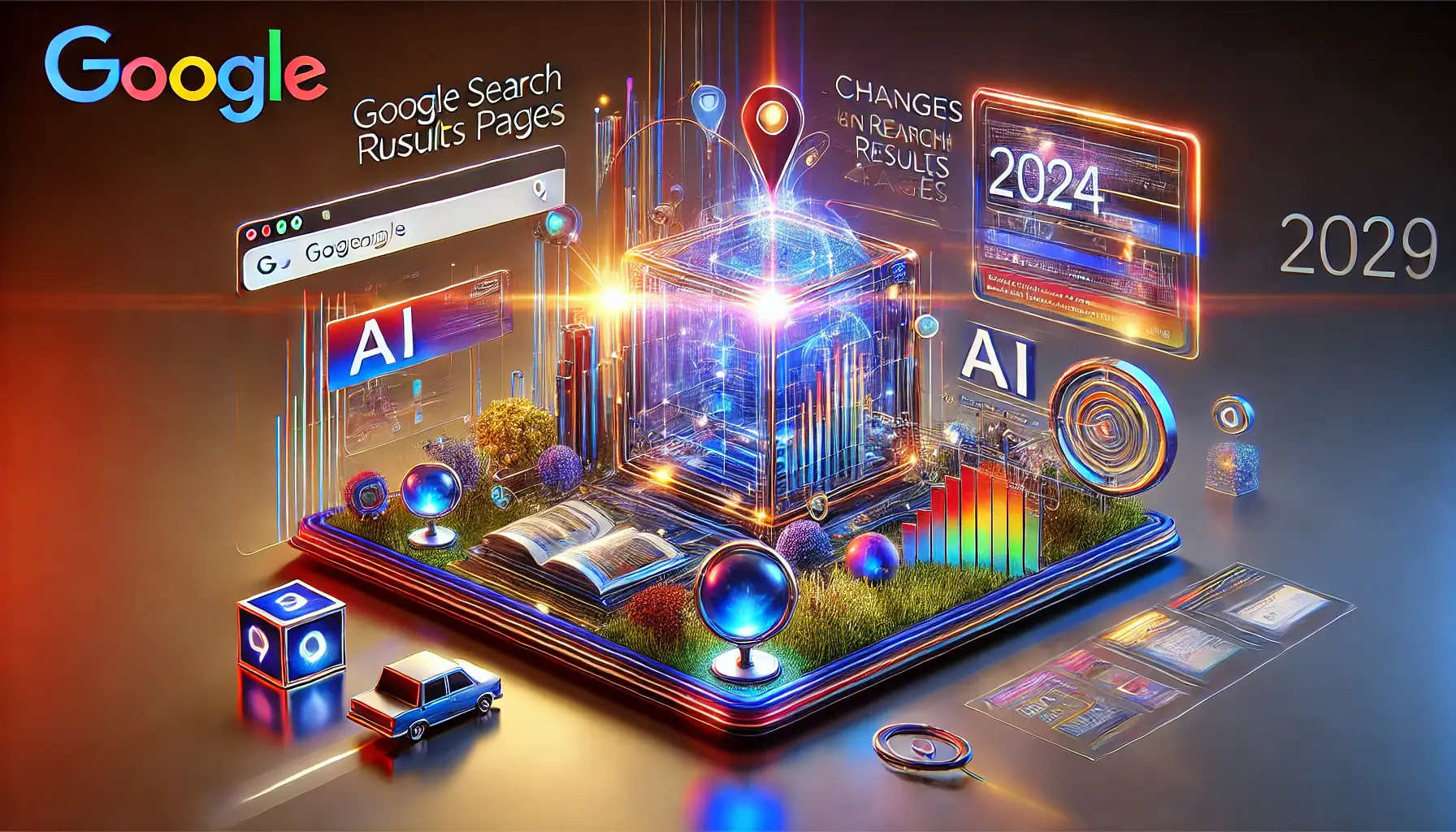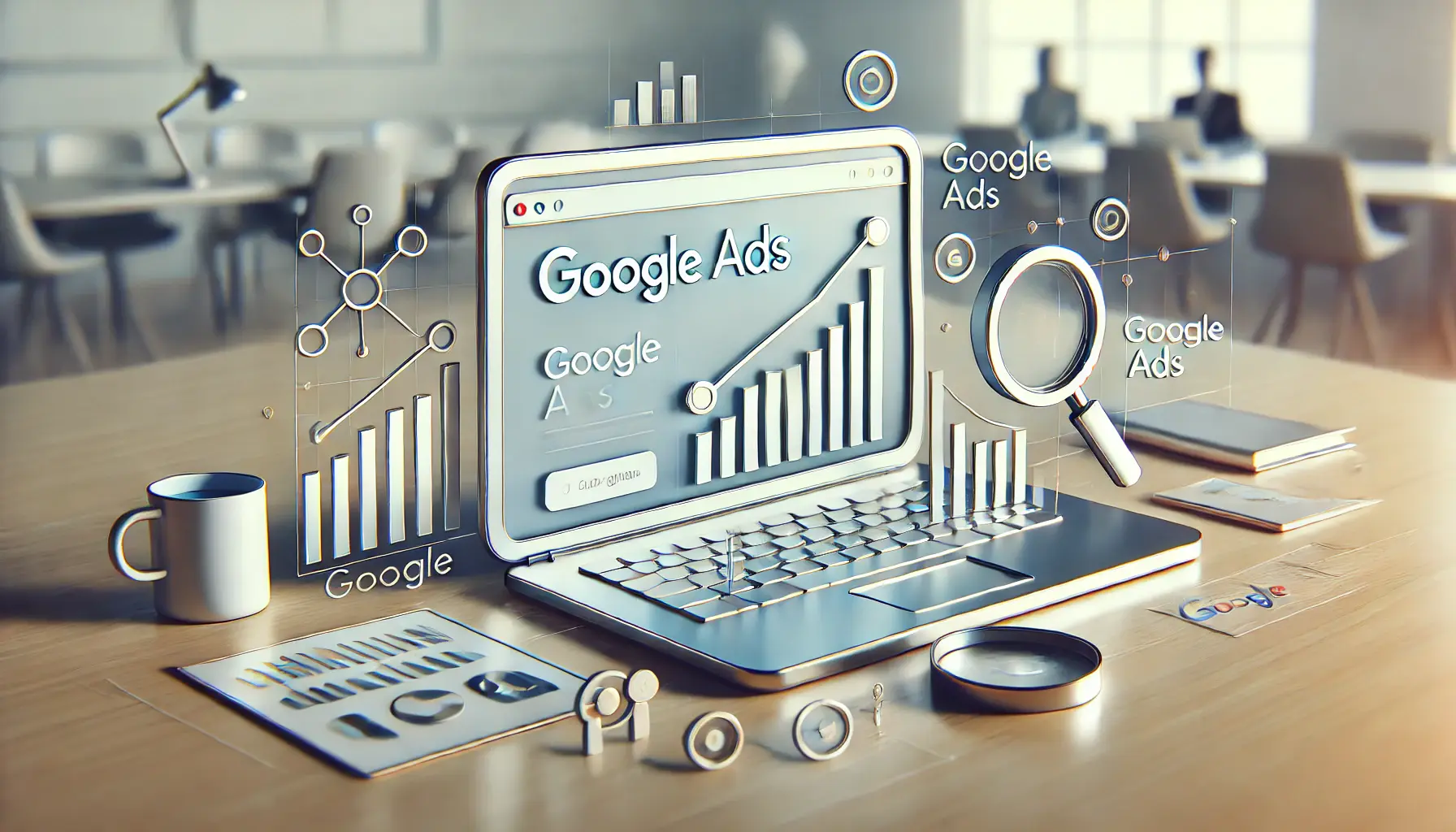In 2024, Google’s Search Engine Results Pages (SERPs) underwent significant transformations, reshaping the digital marketing landscape.
These changes have profound implications for businesses and advertisers, especially those utilizing Google Ads.
Understanding the evolution of SERPSearch Engine Results Page, the page displayed by search engines in response to a query. features is crucial for adapting your advertising strategies to maintain visibility and effectiveness in this dynamic environment.
- Evolution of SERP Features in 2024
- Implications of SERP Changes on Google Ads
- Adapting Google Ads Strategies to SERP Evolution
- Challenges Posed by SERP Changes and Solutions
- Future Trends in SERP and Their Impact on Google Ads
- Summarizing the Impact of SERP Changes on Google Ads
- Frequently Asked Questions on SERP Changes Impacting Google Ads
Evolution of SERP Features in 2024
Google’s SERPs have become more dynamic and interactive, integrating advanced technologies to enhance user experience.
Let’s explore some of the key developments:

Illustrating the transformative impact of AI-powered search results in Google’s SERPs.
Introduction of AI-Powered Search Results
Artificial Intelligence (AI) is changing the way search results are presented.
Google’s algorithms, powered by AI, make results more personalized and contextually relevant, aiming to meet user intentions precisely.
This shift ensures that search results are increasingly tailored to individual users based on their search history, preferences, and behavior.

Highlighting the integration of enhanced visual elements in Google’s Search Engine Results Pages.
Enhanced Visual Elements in SERPs
The visual nature of search results has dramatically evolved.
Features such as image and video carousels, rich snippetsEnhanced search results that include additional information such as reviews, ratings, or images., and knowledge panelsInformation boxes that appear on Google when you search for entities like people, places, or organizations. are now more mainstream, making SERPs more attractive and insightful.
These visual elements are designed to provide fast and relevant information to users, often negating the need to click through to websites.
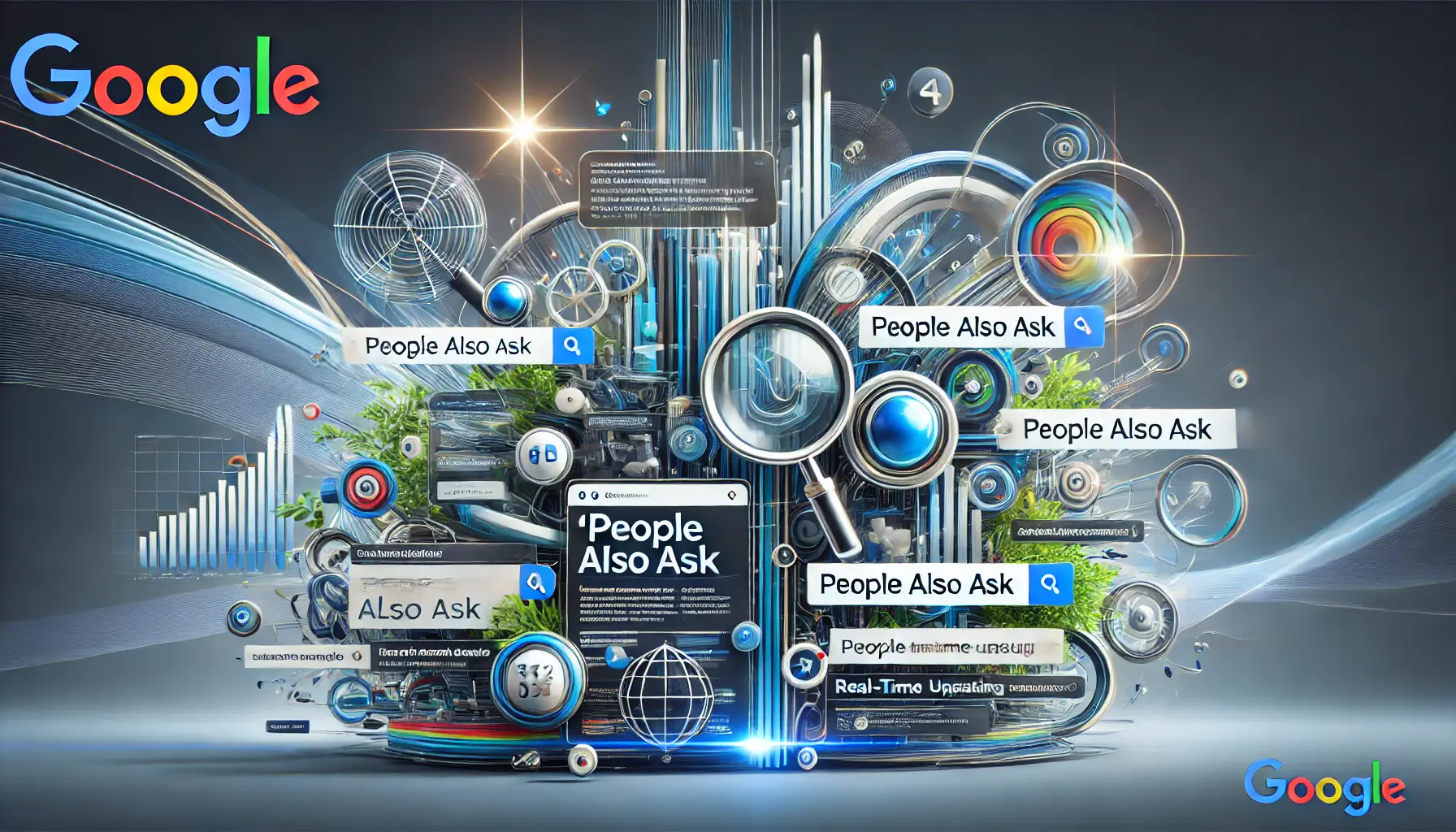
Illustrating the impact of interactive features like ‘People Also Ask’ and real-time widgets in Google’s SERPs.
Increased Engagement with Interactive SERP Features
Interactive features such as ‘People Also Ask’ boxes, expandable menus, and real-time updating widgets have become prominent.
These features allow users to interact directly with search results to get what they need without leaving the SERP.
This reflects Google’s commitment to improving user satisfaction by providing immediate answers.
As a digital marketer, identifying these evolving SERP features is crucial.
They not only change how users interact with search results but also affect the visibility and performance of your Google Ads.
Staying updated about these changes and adopting effective strategies will keep you ahead in this dynamic digital world.
The dynamic evolution of SERP features highlights the growing role of AI and enhanced visual elements, challenging advertisers to adapt strategically.

Visualizing how SERP changes affect Google Ads placement and visibility in a dynamic search environment.
Implications of SERP Changes on Google Ads
The evolution of Search Engine Results Pages (SERPs) in 2024 has significantly impacted Google Ads, influencing ad placement, visibility, and performance.
Understanding these implications is essential for advertisers aiming to maintain and enhance their digital marketing effectiveness.

Illustrating how ad placement and visibility are changing in response to new SERP features.
Shifts in Ad Placement and Visibility
Google’s integration of advanced SERP features, such as AI-generated summariesSummaries created by artificial intelligence to provide concise and contextually relevant information. and interactive elements, has altered traditional ad placements.
Ads now compete with rich snippets, knowledge panels, and other dynamic content, affecting their prominence on the results page.
This shift necessitates a reevaluation of ad strategies to ensure optimal visibility.
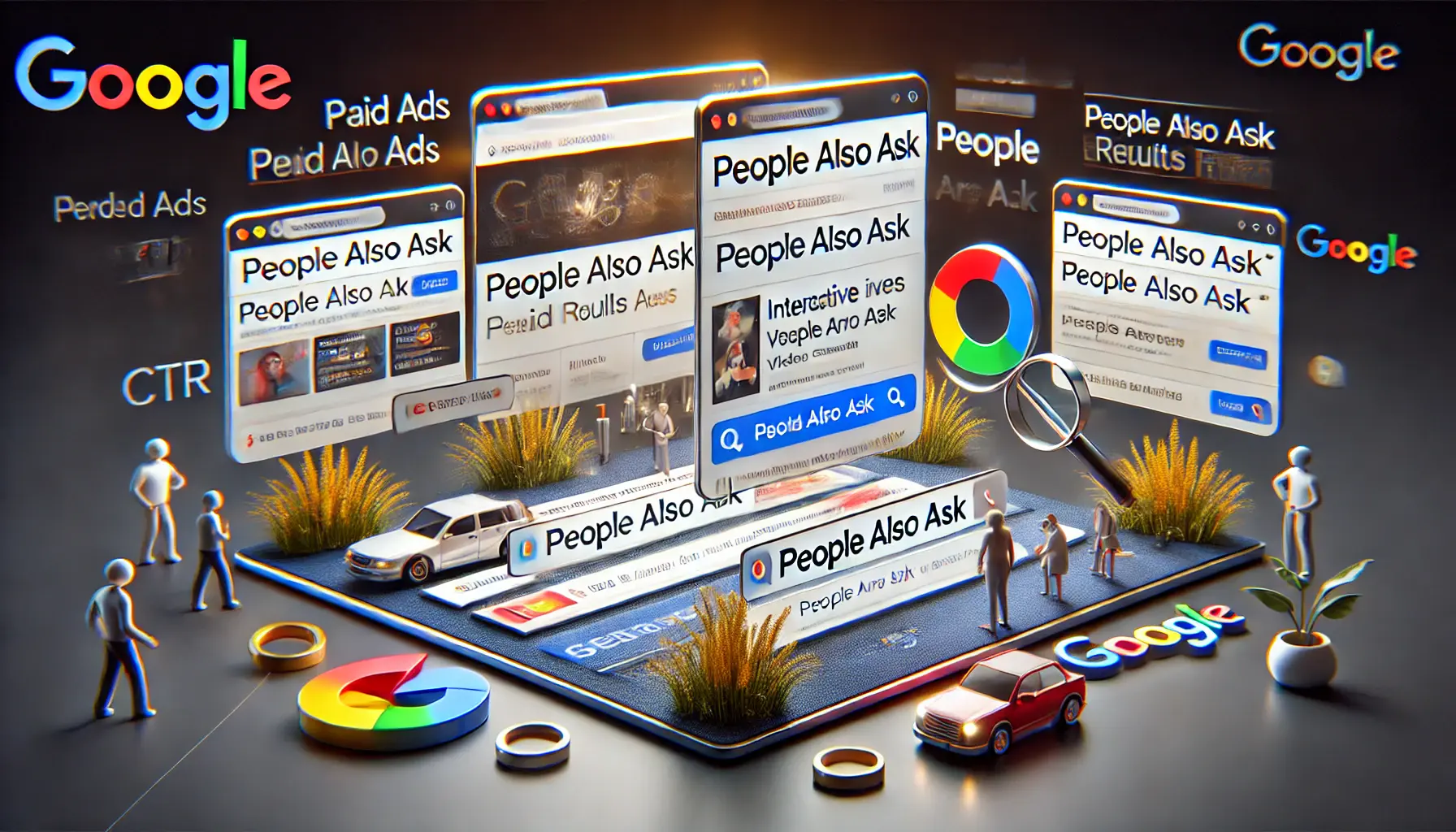
Illustrating how new SERP features like ‘People Also Ask’ and video carousels impact Click-Through Rates (CTR).
Impact on Click-Through Rates (CTR)
The presence of diverse SERP features influences user interaction patterns, potentially affecting the click-through rates of ads.
For instance, features like ‘People Also Ask’ boxes and image carousels can draw attention away from paid advertisements.
Advertisers must analyze these trends to adjust their campaigns accordingly.
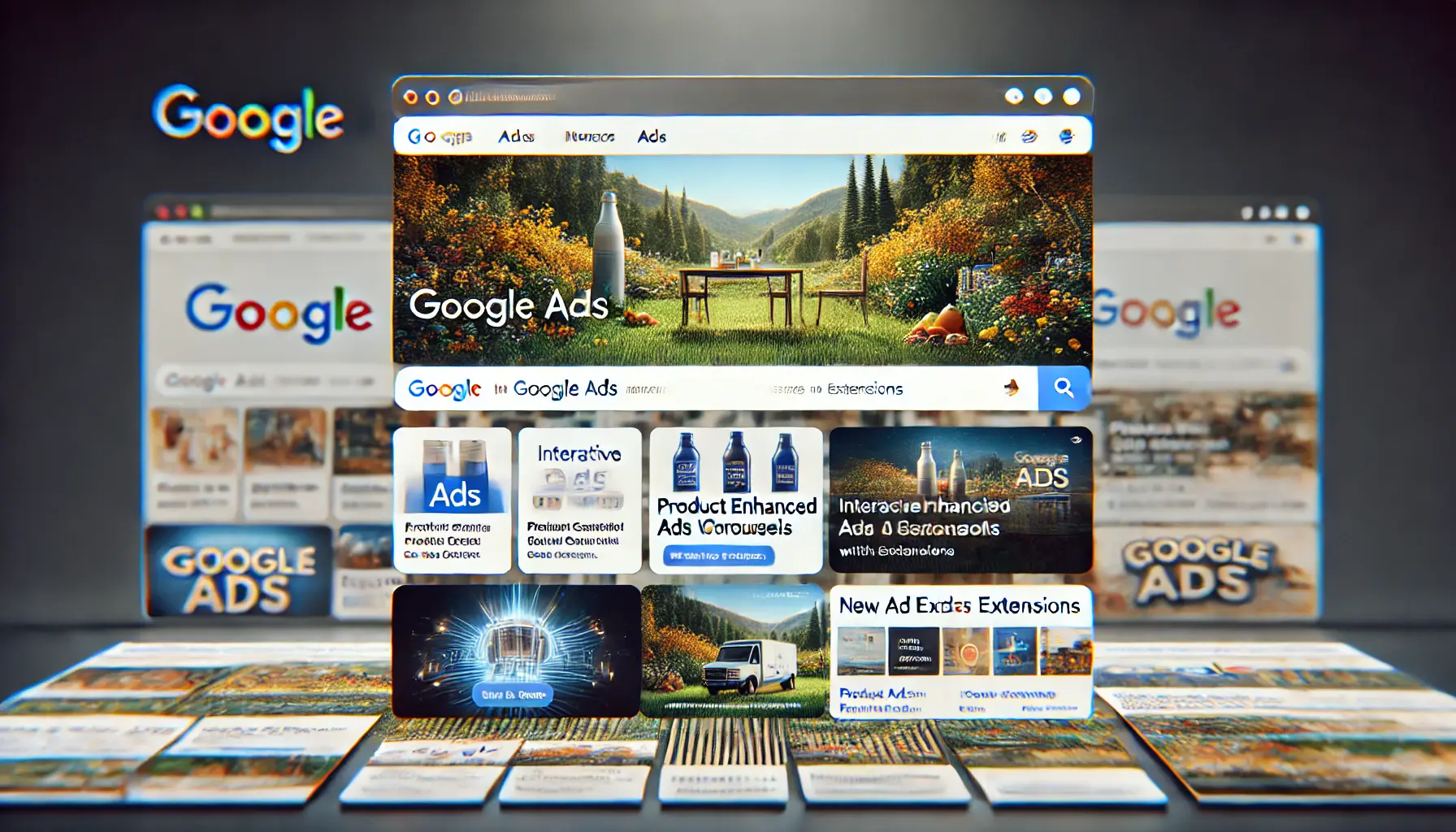
Illustrating the evolution of Google Ads formats and extensions with visually enhanced ads and new features.
Changes in Ad Formats and Extensions
With the continuous evolution of the SERP layout, Google has introduced new ad formats and extensions that match the enriched search experience.
These innovations increase relevance and improve user engagement.
Major developments include:
- AI-Powered Ad Creation: Utilizing artificial intelligence to create more personalized and contextually fitting ad content.
- Visual Upgrades: Incorporating images and interactive elements within ads to align with the visually rich SERPs.
- Advanced Targeting Options: Using AI-driven analytics to refine audience segmentation and enhance ad performance.
With these changes, adaptation will be key to maintaining the effectiveness of Google Ads in the dynamic SERP landscape of 2024.
Ad visibility and performance are directly influenced by enriched SERPs, making strategic adjustments critical for advertisers in 2024.
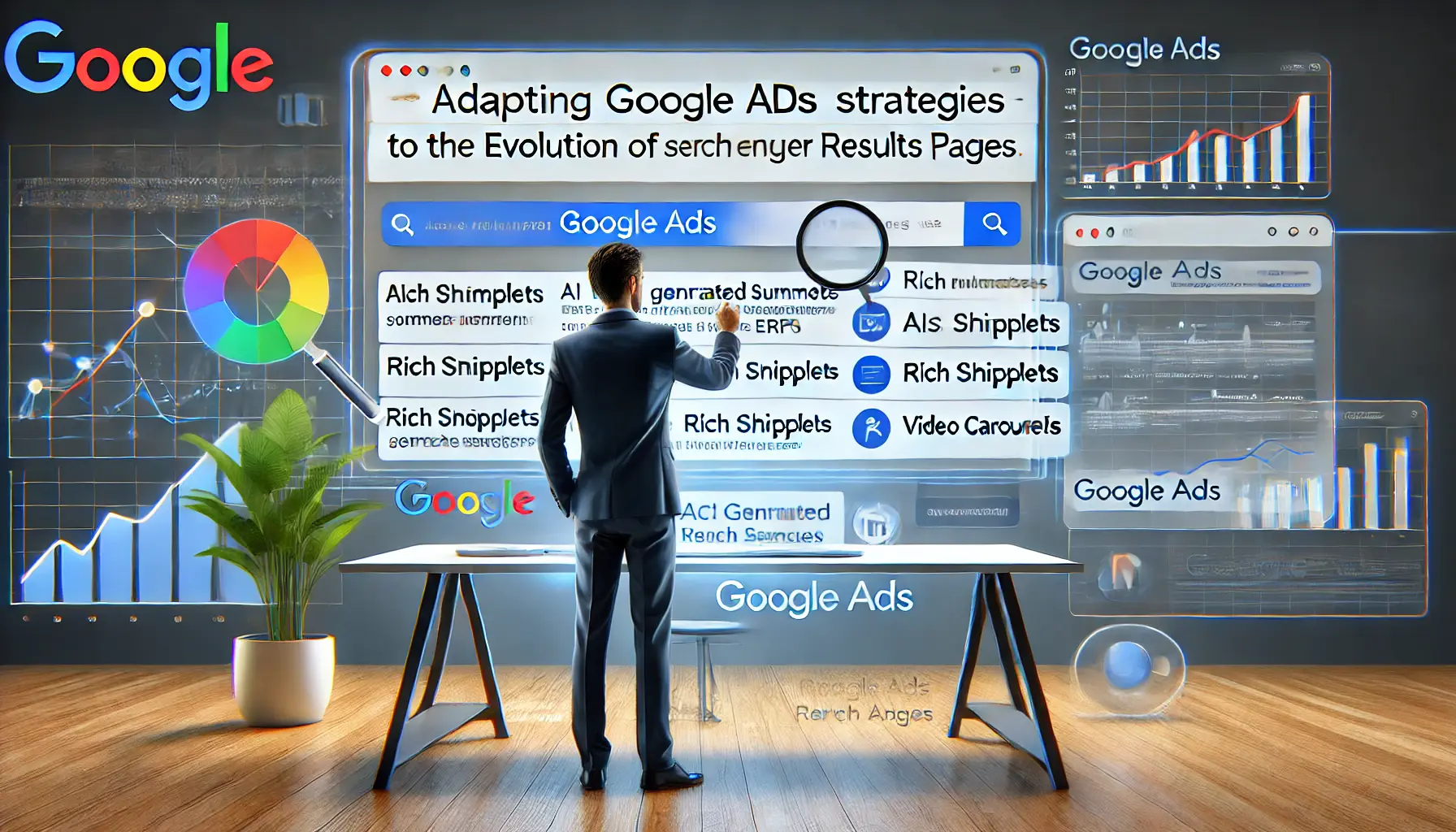
Depicting the process of adapting Google Ads strategies to the evolving landscape of Search Engine Results Pages (SERPs).
Adapting Google Ads Strategies to SERP Evolution
The dynamic nature of Search Engine Results Pages (SERPs) in 2024 necessitates a strategic adaptation of Google Ads campaigns.
To maintain visibility and effectiveness, consider the following approaches:
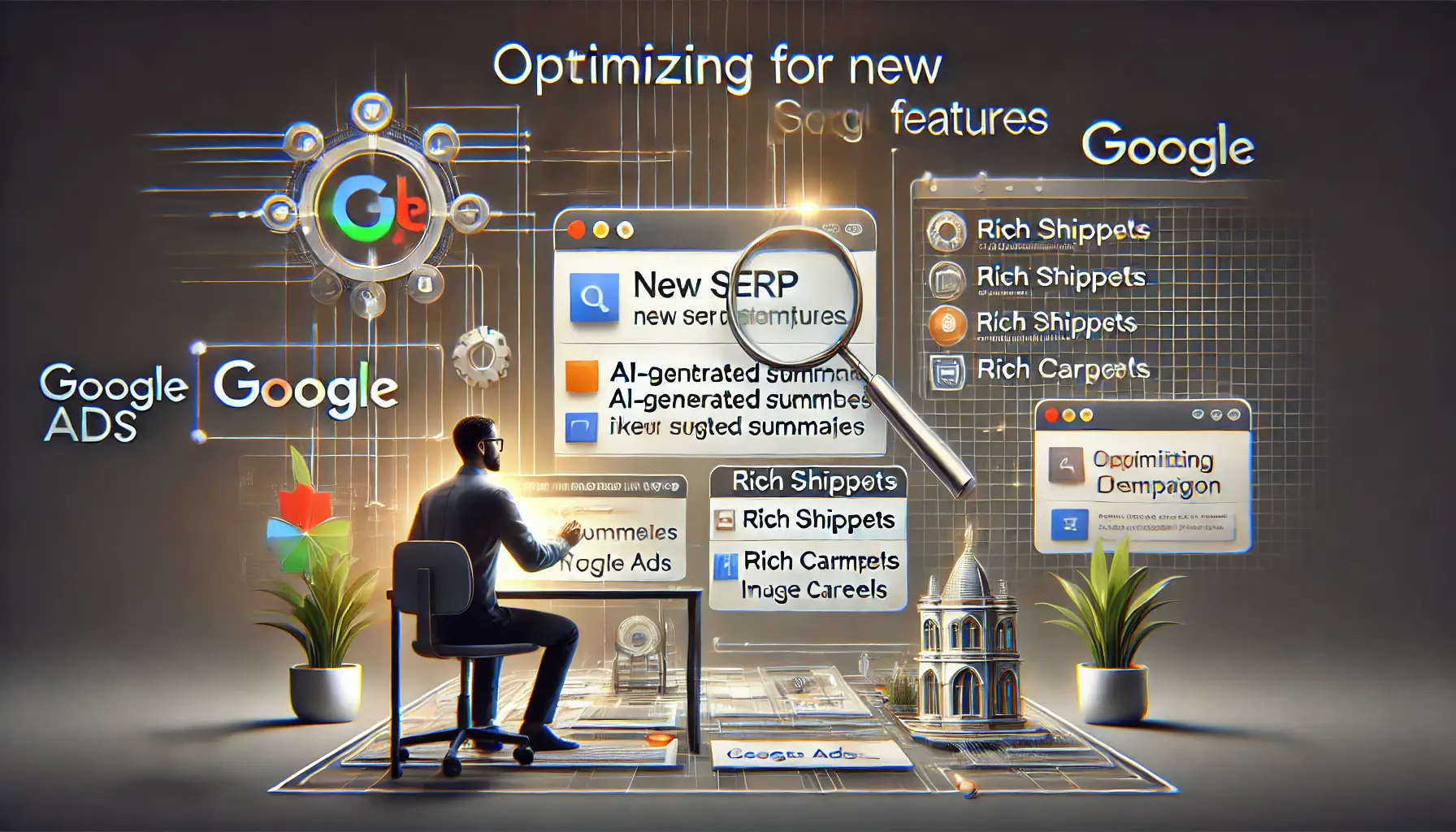
Illustrating the process of optimizing Google Ads for new SERP features to improve visibility and engagement.
Optimizing for New SERP Features
With the integration of AI-generated summaries and interactive elements, it’s essential to align your ad content with these features.
Ensure that your ads are contextually relevant and provide immediate value to users, complementing the enriched SERP environment.

Illustrating the use of AI and machine learning to enhance Google Ads campaigns with optimized content, targeting, and bidding.
Leveraging AI and Machine Learning in Ad Campaigns
Google’s AI-powered tools can significantly enhance advertising efforts.
Using automated bidding strategies, dynamic ad creativesAd content that automatically adjusts based on user behavior and preferences., and audience targeting allows campaigns to better align with user behavior patterns, improving overall performance.
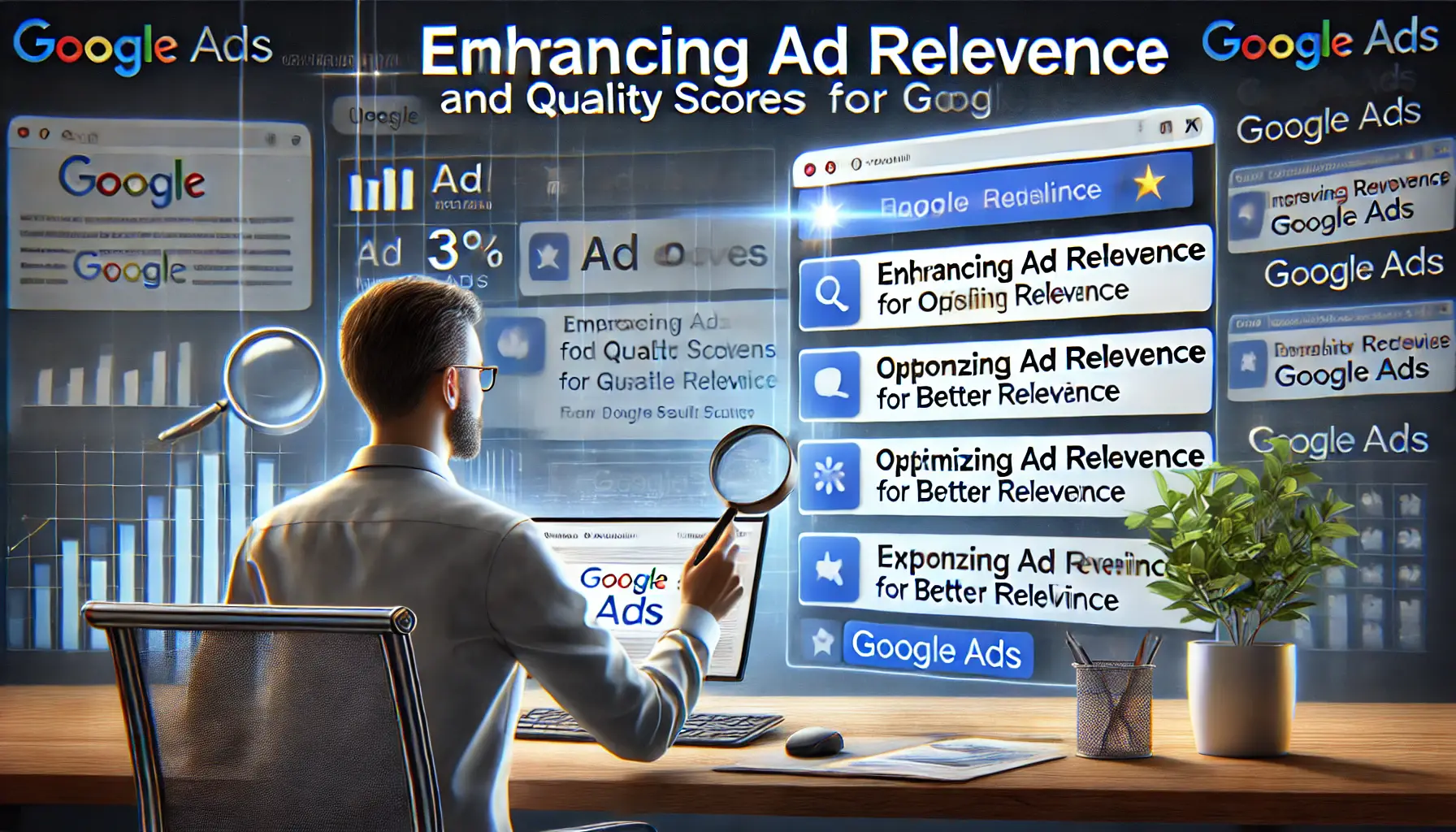
Illustrating the process of improving ad relevance and quality scores through content optimization and data analysis.
Enhancing Ad Relevance and Quality Scores
Creating high-quality, user-centric ad content directly tied to user intent is vital.
Improved ad relevance not only boosts Quality Scores but also enhances ad positioning while reducing cost-per-click.
By embracing these strategies, you will be perfectly positioned to execute your Google Ads campaigns effectively in the dynamic SERP landscape of 2024.
Leveraging AI and aligning ad content with new SERP features ensures sustained campaign relevance and effectiveness.

Illustrating the challenges posed by SERP changes and the solutions advertisers must implement to adapt.
Challenges Posed by SERP Changes and Solutions
The evolving landscape of Search Engine Results Pages (SERPs) in 2024 presents several challenges for advertisers using Google Ads.
However, with these challenges come innovative solutions to navigate this new terrain effectively.
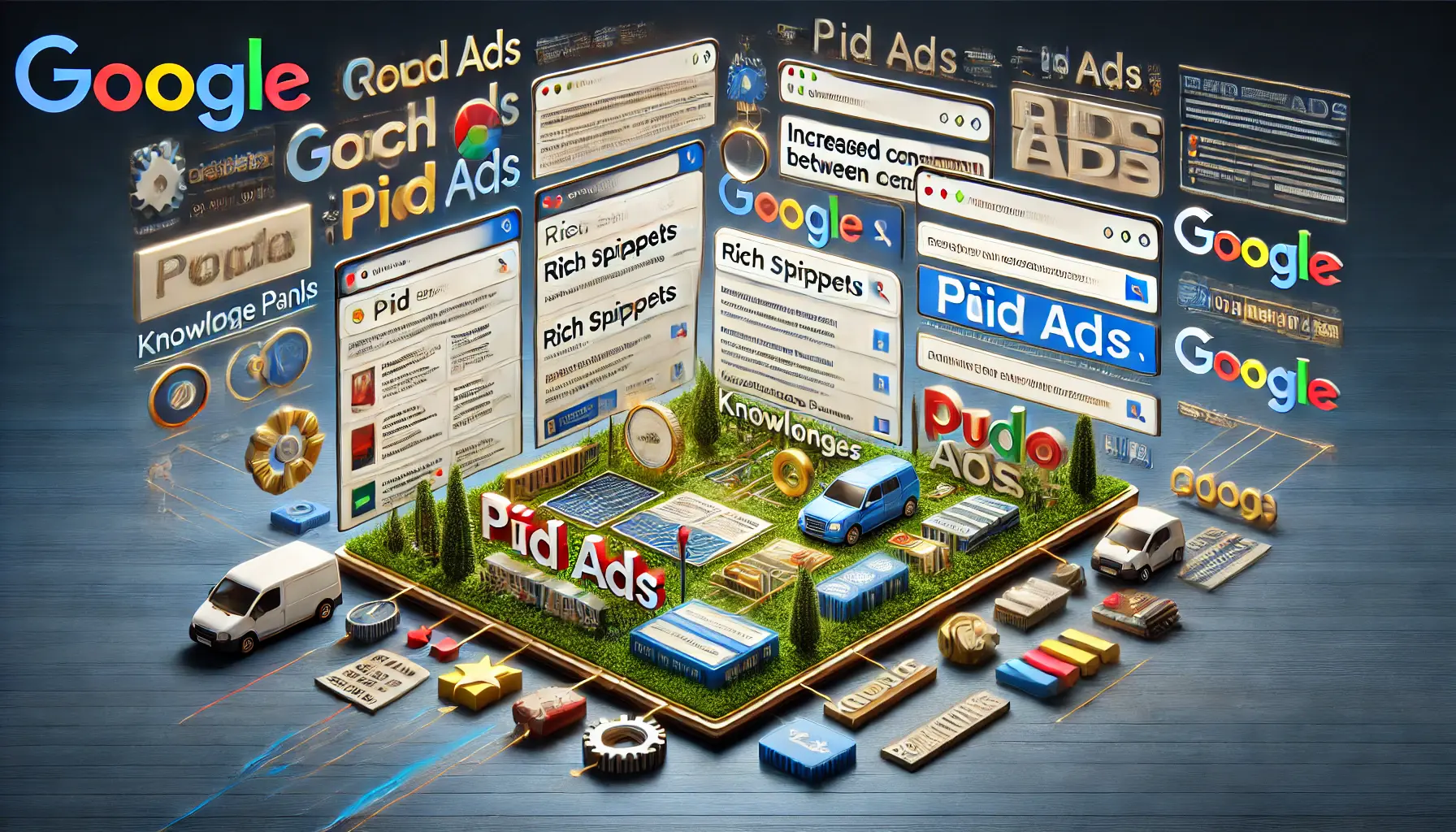
Illustrating the increased competition between paid ads and organic search results, highlighting the dominance of organic elements.
Increased Competition with Organic Results
As SERPs become more enriched with features like AI-generated summaries and interactive elements, ads face heightened competition for user attention.
To address this:
- Improve Ad Creativity: Create appealing ad creatives that outshine dynamic SERP features.
- Apply Ad Extensions: Leverage ad extensions to display more information and expand ad visibility.
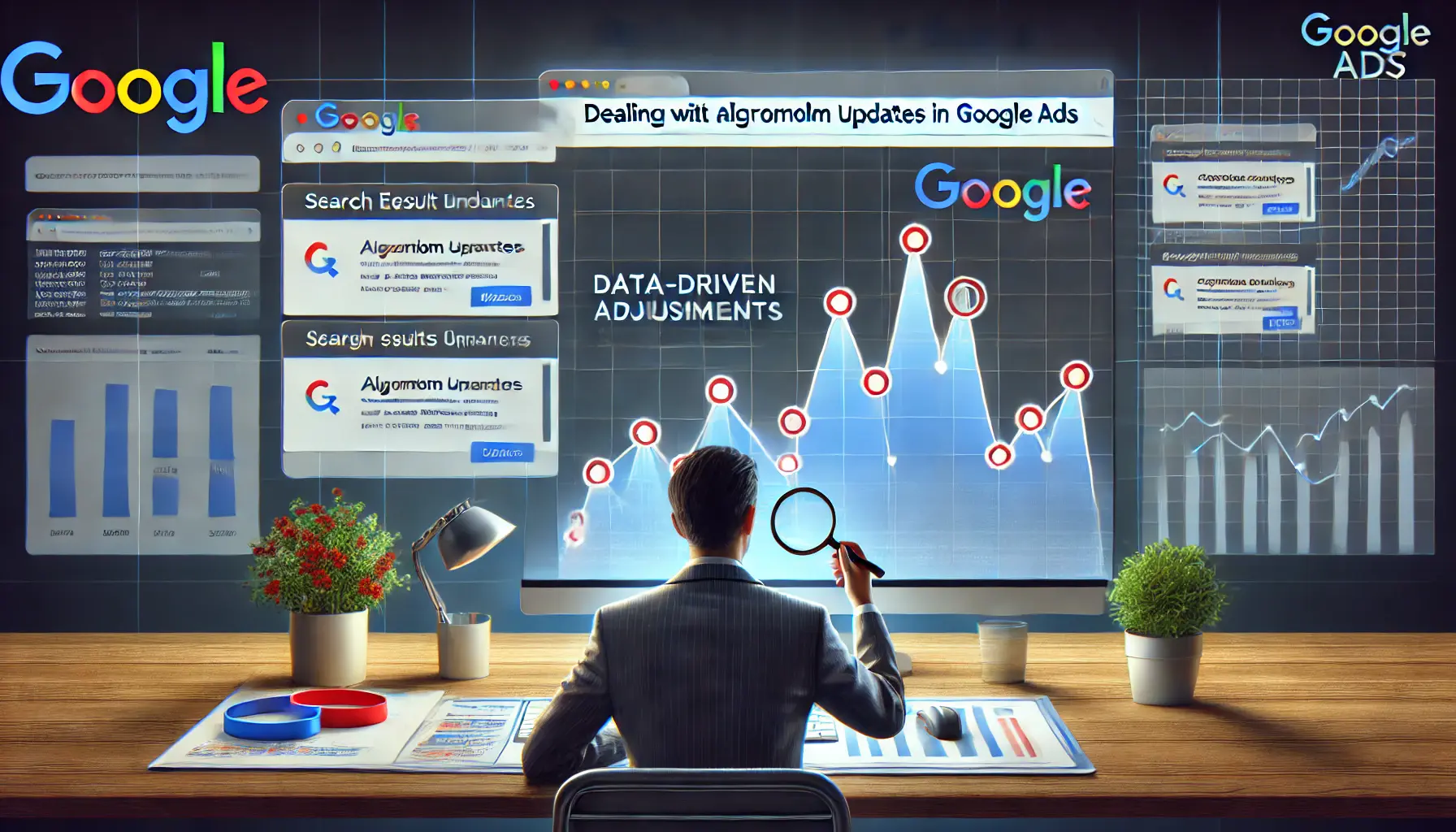
Illustrating the process of adapting Google Ads campaigns to algorithm updates and fluctuating search rankings.
How to Deal with Algorithm Updates
Algorithm updates come frequently and could hurt your ad performance and visibility.
To reduce the impact:
- Stay Informed: Keep up to date with all algorithm changes by Google for prompt strategy adjustments.
- Focus on Quality: Ensure that ad content is of high quality, relevant, and in line with user intent and Google’s policies and guidelines for ads.
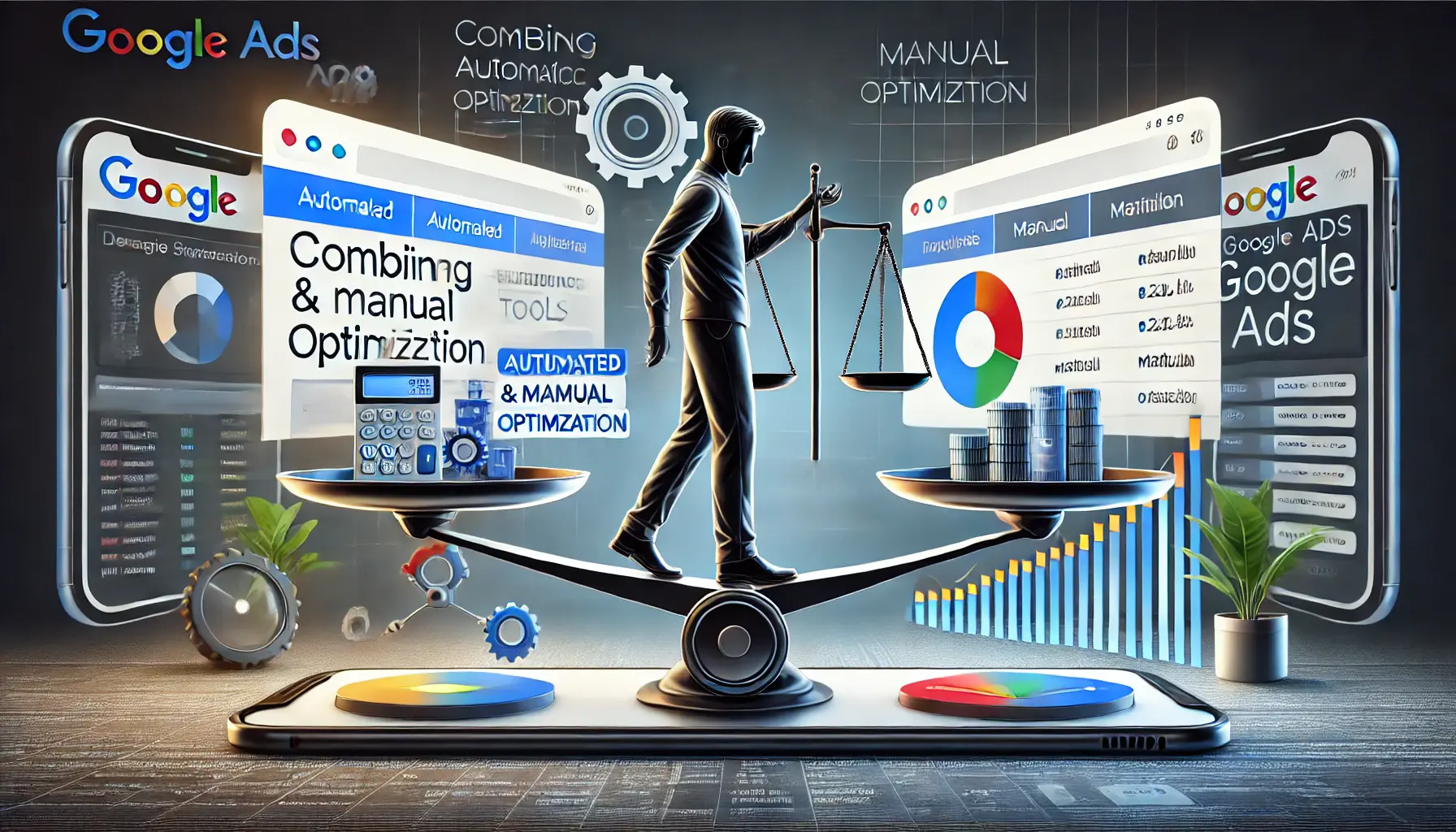
Illustrating the balance between automation and manual optimization in Google Ads campaigns.
Balancing Automation with Manual Optimization
While automation provides efficiency, over-reliance can result in suboptimal results.
To achieve a balance:
- Monitor Automated Campaigns: Frequently check automated strategies to ensure performance aligns with goals.
- Implement Manual Adjustments: Execute data-driven, manual optimizations that will better meet the objectives of the campaign.
By addressing these challenges with proactive solutions, advertisers can effectively adapt their Google Ads strategies to the changing SERP environment in 2024.
Addressing zero-click searchesSearch results where the user's query is answered directly on the SERP without needing to click a link. and increased competition with creativity and data-driven optimizations offers a pathway to success in the evolving SERP landscape.

Illustrating future trends in SERP and how they impact Google Ads, with enhanced features like AI-driven summaries and interactive ads.
Future Trends in SERP and Their Impact on Google Ads
As we look ahead to 2025, the evolution of Search Engine Results Pages (SERPs) continues to reshape the digital advertising landscape.
Staying informed about these trends is crucial for advertisers aiming to maintain a competitive edge.

Illustrating the future of SERP developments beyond 2024 with emerging trends like AI-driven content and immersive visual elements.
Predictions for SERP Developments Beyond 2024
Several key trends are anticipated to influence SERPs in the coming years:
- AI-Generated Summaries: Overviews by Google AI will be more common, giving users direct, short-form answers through AI on the SERPs. This will reduce clicks on individual websites, as users can find what they’re looking for without leaving the search results page.
- More Powerful Visualization and Interactivity: The rise of media-rich SERPs using videos, images, or other interactive widgets will create highly informative and engaging search pages. This will challenge marketers to adopt creative approaches to stand out amidst this dynamic content.
- Rise of Zero-Click Searches: With the growing prominence of AI-generated answers and featured snippets, users may obtain the desired information without clicking on any search results. This trend challenges traditional success metrics and calls for innovative approaches to capture audience attention.
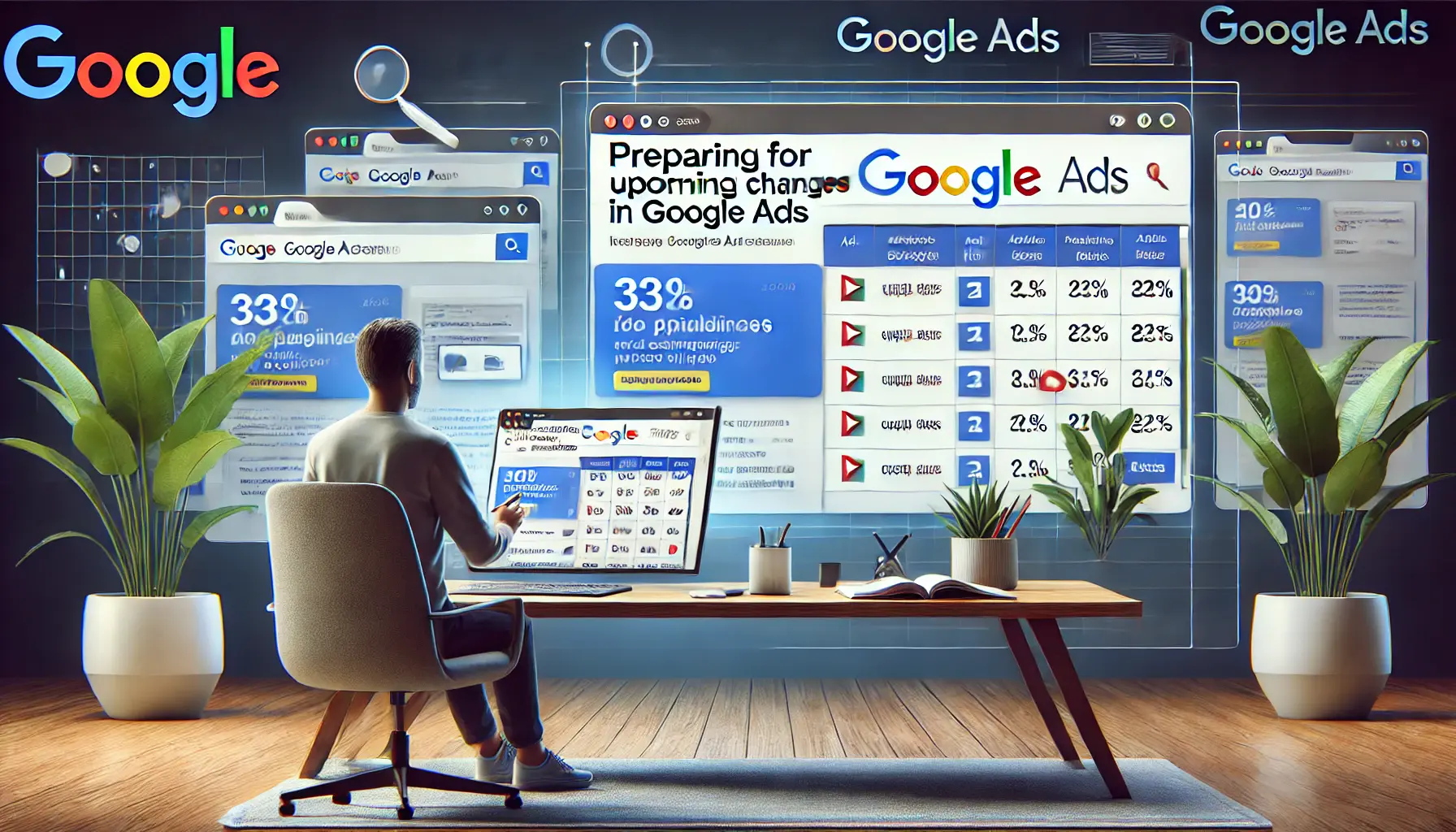
Illustrating the process of preparing for upcoming changes in ad policies and adjusting campaigns accordingly.
Preparing for Upcoming Changes in Ad Policies
As these SERP features continue to evolve, Google is likely to implement new ad policies and formats.
Advertisers should be ready to:
- Embrace AI-Powered Campaigns: Use AI-powered tools to provide more personalized and contextually relevant ads that align with user intent and an enriched SERP environment.
- Explore New Ad Formats: Stay informed about emerging ad formats, including interactive and shoppable ads, to engage users effectively within the SERP.
- Focus on First-Party Data: As privacy regulations increase, leveraging first-party data will become critical for effective targeting and campaign optimization.
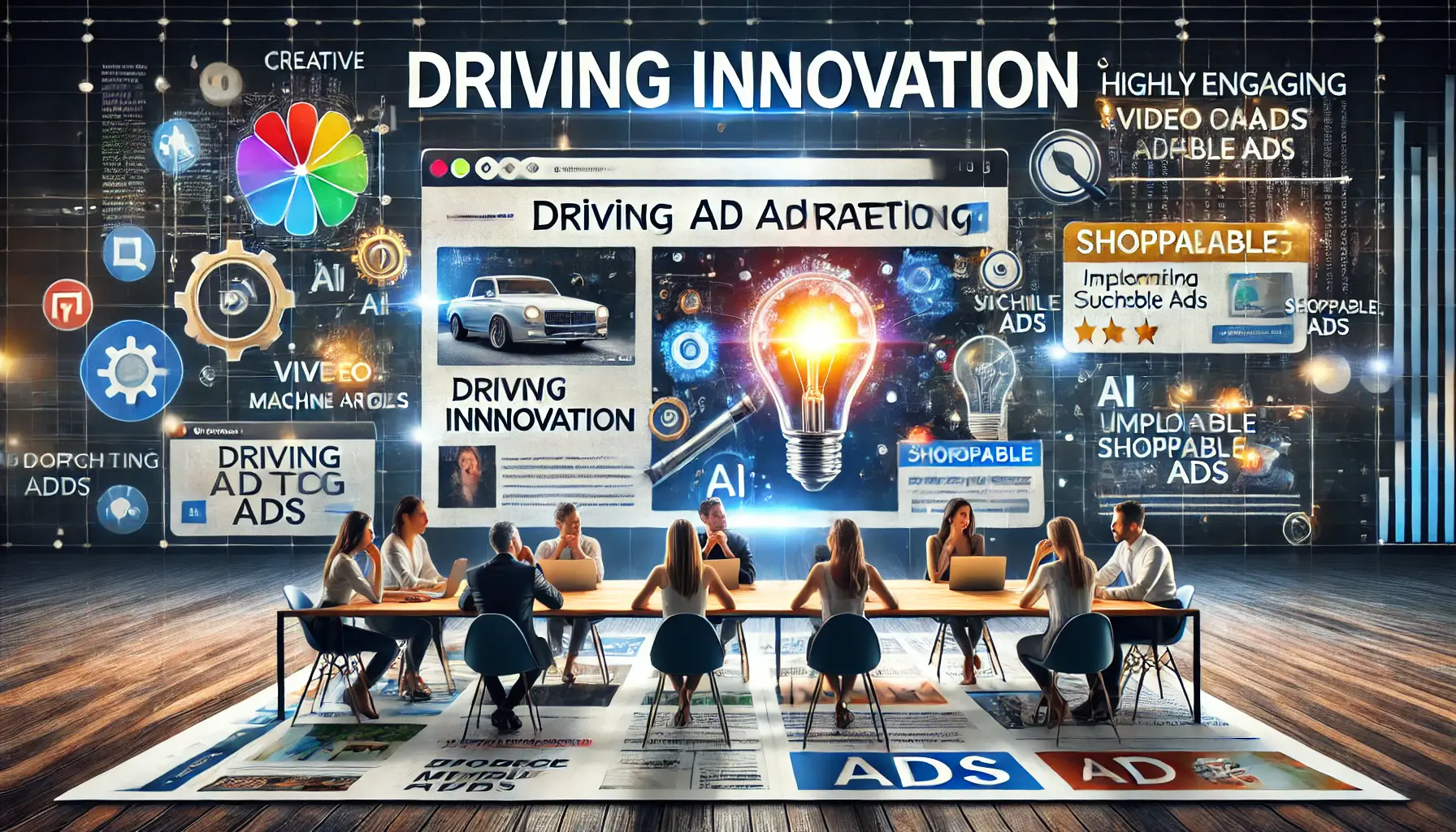
Illustrating the process of driving innovation in digital advertising with advanced technologies like AI and machine learning.
Driving Innovation in Digital Advertising
To succeed in the evolving digital landscape, advertisers should:
- Invest in Video Content: Platforms like YouTube and TikTok are increasingly functioning as search engines. Creating engaging video content can enhance visibility and user engagement.
- Optimize for Conversational Search: As users adopt more natural and conversational search queries, crafting ad content to suit this behavior will improve relevance and performance.
- Diversify Across Platforms: Expanding advertising efforts beyond traditional search engines to include social platforms and emerging search tools can capture a broader audience.
By anticipating these trends and proactively adapting strategies, advertisers can effectively navigate the evolving SERP landscape and maintain the efficacy of their Google Ads campaigns in 2025 and beyond.
Preparing for AI-driven summaries and rich media advancements will position advertisers ahead in the future SERP ecosystem.
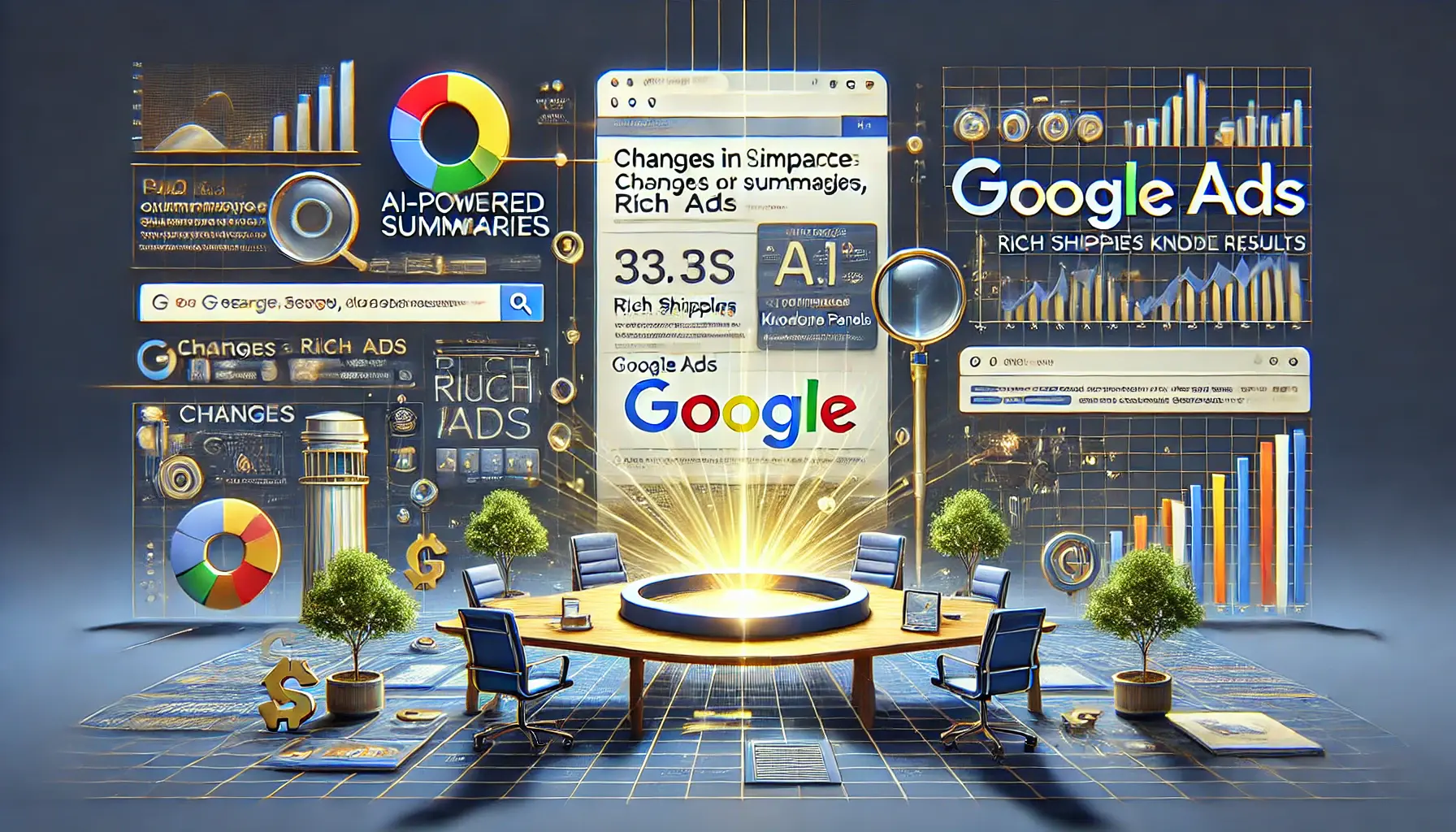
Illustrating the effects of SERP changes like AI-powered summaries and rich snippets on Google Ads visibility and placement.
Summarizing the Impact of SERP Changes on Google Ads

Illustrating the dynamic changes in Google’s SERP in 2024, including AI-driven summaries and enhanced search features.
Understanding the Dynamics of 2024 SERP Changes
The Search Engine Results Pages (SERPs) have undergone significant transformations in 2024, introducing AI-powered summaries, enhanced visual elements, and interactive features.
These changes have redefined how users interact with search results and how advertisers must adapt their Google Ads strategies to maintain visibility and effectiveness.
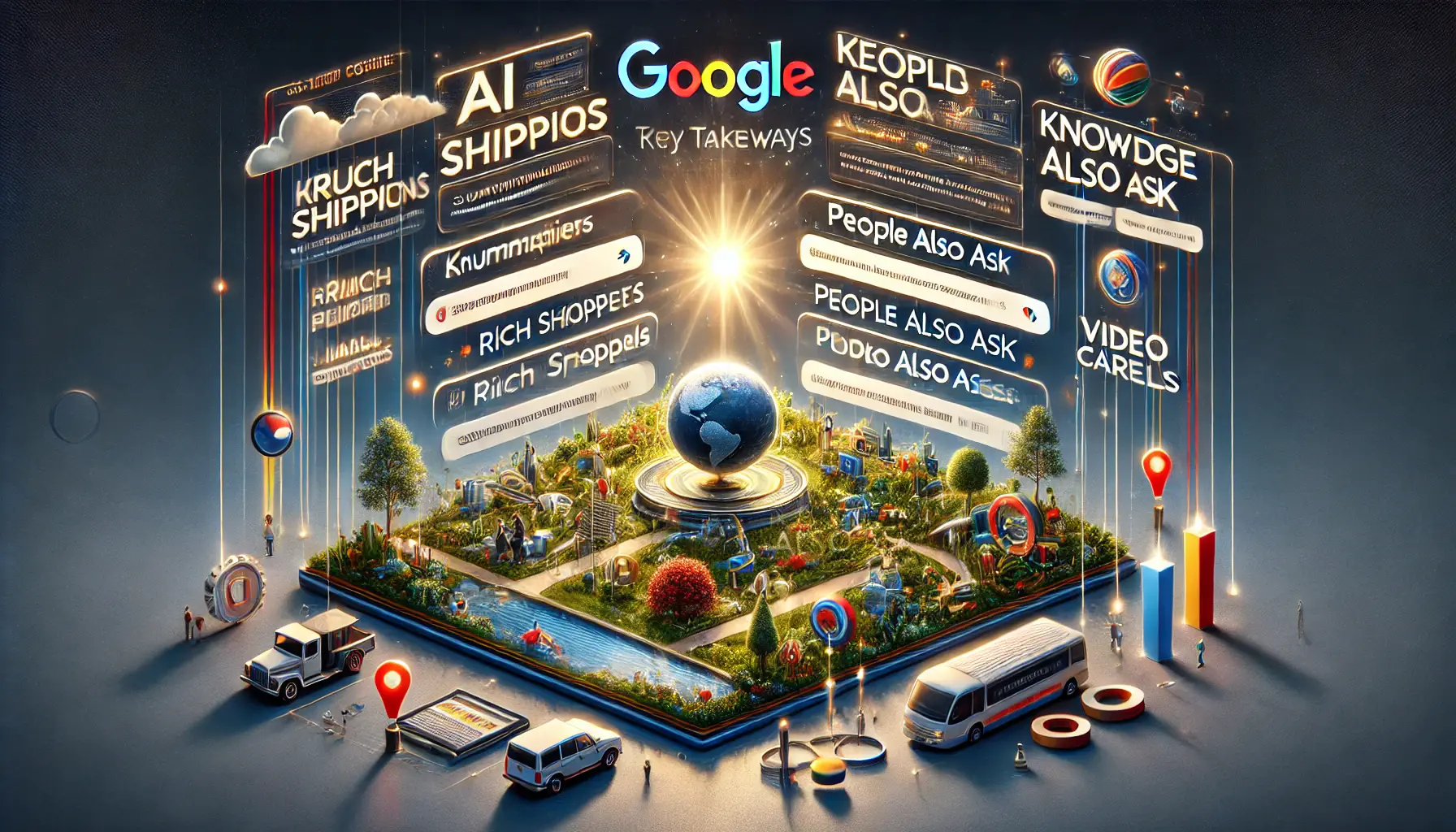
Illustrating the key takeaways from the evolution of Google SERPs with dynamic, visually rich search elements.
Key Takeaways from the Evolution of SERPs
The article explored several critical aspects of SERP evolution and its implications:
- The integration of AI and machine learning: AI enhances both search results and ad campaigns, making them more relevant and personalized.
- Increased competition: Ads now contend with enriched SERPs, including organic results, rich snippets, and interactive widgets.
- Leverage of new ad formats: Embracing innovative ad formats is necessary to stay competitive in a dynamic SERP environment.

Illustrating the process of adapting to challenges with strategic solutions in digital advertising.
Adapting to Challenges with Strategic Solutions
Advertisers face challenges such as zero-click searches, algorithm updates, and balancing automation with manual optimizations.
The article outlined actionable solutions, including:
- Focusing on ad quality: Creating high-quality, relevant ads aligned with user intent.
- Utilizing first-party data: Leveraging first-party data to optimize targeting and campaign effectiveness.
- Exploring new ad formats: Incorporating interactive and visually rich ad formats to enhance engagement.

Illustrating the preparation for future trends in digital advertising and search engine results, including AI and AR.
Looking Ahead: Future Trends and Preparation
Predictions for 2025 indicate further advancements in AI-driven search, increased use of rich media, and the rise of conversational queries.
Preparing for these changes involves:
- Investing in video content: Creating engaging video content to capture attention on platforms like YouTube and TikTok.
- Optimizing for conversational search: Adapting ad content to align with natural, conversational search queries.
- Diversifying advertising efforts: Expanding campaigns across multiple platforms to reach broader audiences.
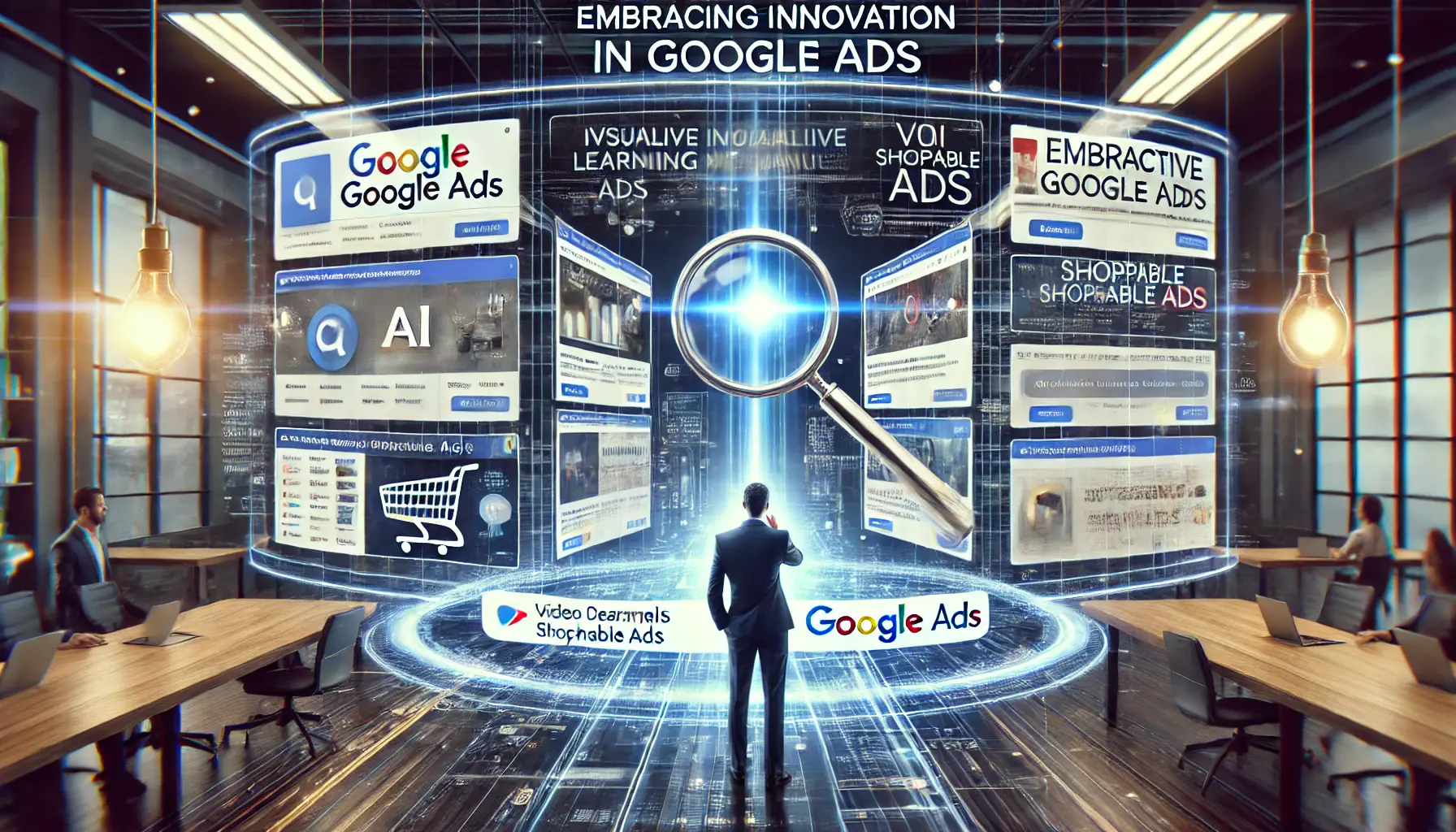
Illustrating the process of embracing innovation in Google Ads with cutting-edge technologies like AI and interactive ads.
Conclusion: Embracing Innovation in Google Ads
The ever-changing nature of SERPs requires constant adaptability and innovation from advertisers.
By understanding these changes, addressing challenges strategically, and preparing for future trends, businesses can ensure the efficiency of their Google Ads campaigns.
An informed, proactive approach to marketing empowers advertisers to thrive in this competitive and dynamic landscape.
Adapting to SERP changes with innovative strategies and a proactive mindset will help advertisers maintain competitive advantages.
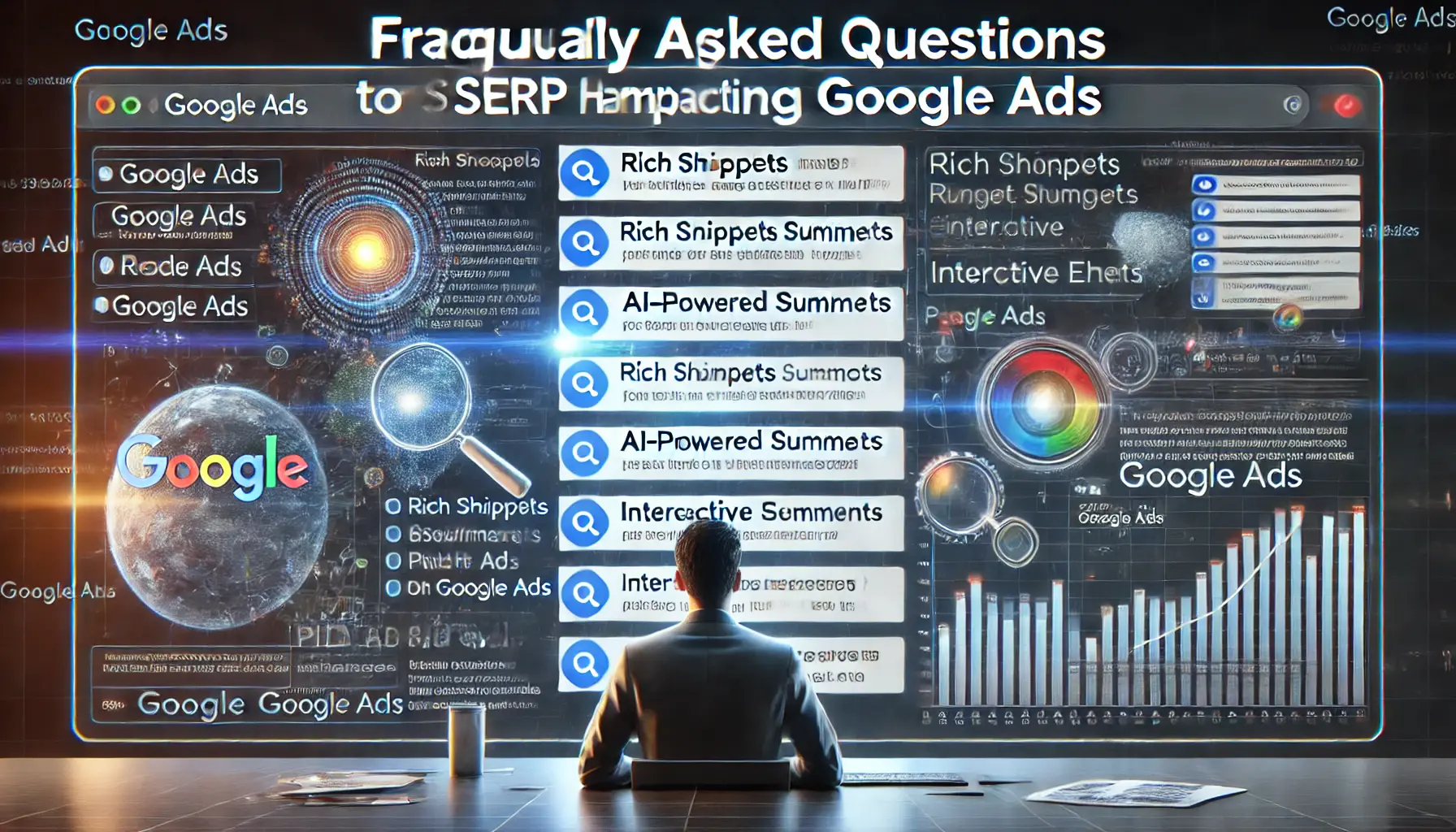
Illustrating the process of understanding the impact of SERP changes on Google Ads and common advertiser questions.
Your campaigns can be managed by an agency specialized in Google Ads, check out our service page.
Frequently Asked Questions on SERP Changes Impacting Google Ads
As the digital landscape evolves, many advertisers have questions about how changes in Search Engine Results Pages (SERPs) affect their Google Ads strategies.
Here are some common inquiries:
AI-generated summaries can push traditional ads further down the page, reducing their visibility.
Advertisers may need to adjust strategies to maintain prominence.
Zero-click searches provide answers directly on the SERP, decreasing the likelihood of users clicking on ads.
This trend challenges traditional ad engagement metrics.
Incorporating rich media into ads and optimizing for visual SERP features can enhance engagement and align with user preferences for visual content.
Leveraging first-party dataData collected directly by a business from its customers or audience, often through interactions on owned platforms. allows for more precise targeting and personalization, helping ads stand out amidst evolving SERP features and user expectations.
Algorithm updates can alter ad rankings and visibility.
Staying informed and adjusting campaigns accordingly is essential to maintain optimal performance.
New ad formats, such as interactive or shoppable ads, can increase engagement and conversion rates by aligning with the latest SERP features and user behaviors.
Combining automated tools with manual adjustments allows for efficient campaign management while ensuring strategies remain aligned with business objectives.
Enhancing ad quality, relevance, and utilizing ad extensions can help ads stand out amidst the enriched and competitive SERP environment.
Adapting ad copy to mirror natural, conversational language can improve relevance and engagement with users employing conversational search queries.
